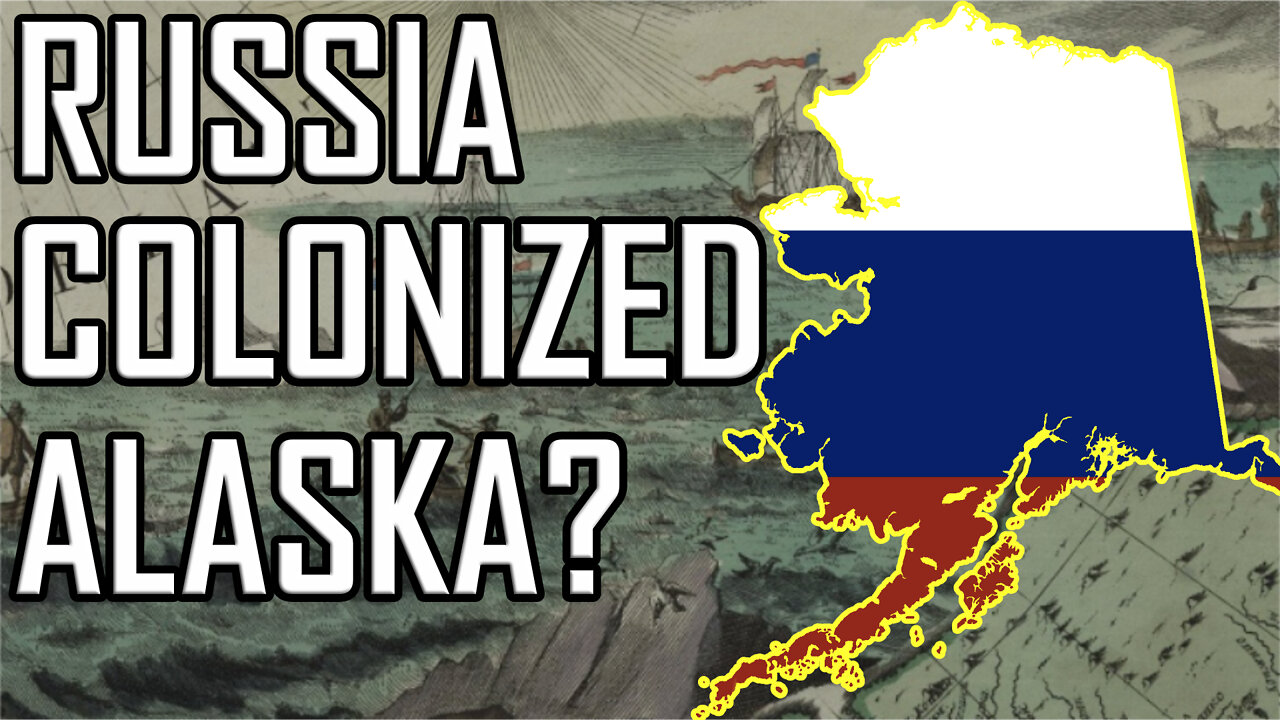Premium Only Content

The Forgotten Russian Colony: Russian Alaska.
The Russian Colonization of Alaska was one of the largely forgotten colonial adventures of the European powers. However, it played a major part in the development of Alaska, and a political dynamic change over the course of many decades. In Today's video, we will be covering this largely forgotten colony.
________________________
Support The Channel:
♥Patreon ► https://www.patreon.com/Tipsyfishs
♥PayPal ► https://www.paypal.com/paypalme/TipsyF
Twitch ► https://www.twitch.tv/tipsyfishes
Twitter ► https://www.twitter.com/Tipsyfishs
Facebook ►: https://www.facebook.com/TipsyHistory
Download TubeBuddy free ► https://www.tubebuddy.com/Tipsy
Download VidIQ free ► https://vidiq.com/#_l_28e
Since the Russian independence in the 15th century, land to the east was seen by many as a mythical place, homeland of the horse nomad, home to a secret power that great empires held, and fur... don't forget about the fur. Russian colonization of Siberia was a centuries long endeavor, and one that would catapult the state to have a massive stretch of territory, even though limited population existed the further east they claimed. The last major expeditions of this kind, was that of Semyon Dezhnev back in 1648. Dezhnev managed to sail around the eastern cape of Siberia, sail into the Bering strait, and go up the Anadyr River to found an outpost. A land-bridge between Siberia and the Americas, had been believed to have existed, and while Dezhnev was likely very un-aware of what was discovered, he proved that no such land bridge existed, and was the first recorded individual, to have sailed through the Bering straight. However, the debate still raged as to whether or not a land-bridge did exist, as his discover was not relied to the Russian government.
It wouldn't be until late 1724, when Tsar Peter the Great, once again called for expeditions. Early next year, was the first Kamchatka expedition, headed by Vitus Bering. This expedition, was set out to confirm if a strait existed between Asia and North America. This he managed to accomplished and had provided useful insights into the geography of Eastern Siberia. In total, the expedition surveyed more than 3500 km of the sea, which was later named after Bering. Its maps of the area were later used by all Western European cartographers.
But Berings work was not yet done, in 1733, Peter once again called upon his services, funding what would be known as the Great Northern Expedition. One of the largest expeditions within all of History. The expedition had a few goals, one being to find and map eastern Siberia, attempt to find a northern sea route from the Pacific to the Atlantic, and, if possible, explore the western shores of Northern America. All total, over 3,000 individuals were involved in this expedition, and it cost the Russian state 1.5 million rubles, one sixth of it's annual budget at the time. That very roughly translates to around 500 million US dollars in modern currency.
This expedition, discovered Alaska to the Europeans, as well as the Aluetin islands, four more island groups, and heavily mapped out the eastern Siberian and Kuril islands. However, the inability for Bering to travel above the North-Eastern tip of Siberia, did crush any dream, of a Atlantic, Pacific route, much to the dismay of Peter. Bering himself, work completed, did not get to enjoy any reprieve. After leaving the Alaskan coast in 1742, his ships were grounded in a storm and torn to pieces, the crew managed to winter over on an island, but there, Bering fell ill and died, buried, during his greatest discovery. The survivors of his crew, managed to return a year later, bringing back with them, high quality otter pelts, something, that interested many individuals indeed.
-
 12:03
12:03
The History Guy: History Deserves to be Remembered
3 years agoPopham: the Forgotten Colony
1.79K9 -
 1:47:49
1:47:49
Jeff Ahern
3 hours ago $0.23 earnedThe Sunday Show!
111K4 -
 LIVE
LIVE
Spartan
1 hour agoExpedition 33, Halo Later on (Maybe)
104 watching -
 LIVE
LIVE
Meisters of Madness
1 hour agoFinals and Wuchang!
76 watching -
 LIVE
LIVE
Lofi Girl
2 years agoSynthwave Radio 🌌 - beats to chill/game to
254 watching -
 LIVE
LIVE
BBQPenguin_
2 hours agoTasking & PVP
48 watching -
 LIVE
LIVE
FrizzleMcDizzle
3 hours agoGladius, Creature of the Night - NEW NIGHTLORD - NightReign
53 watching -
 8:31
8:31
MattMorseTV
1 day ago $1.61 earnedTexas just did the IMPOSSIBLE.
70.3K91 -
 5:02:13
5:02:13
Rotella Games
19 hours agoGreen Hell Day 6 | We Have a LONG Way to Go
20.2K4 -
 41:26
41:26
The Mel K Show
6 hours agoMel K & Clay Clark | Financial Success Hides Behind Self Discipline: Five Pillars | 8-24-25
40.4K4